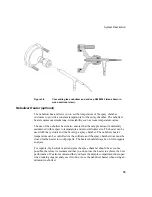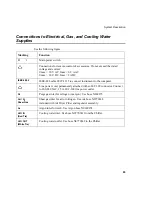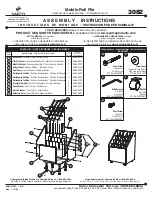
System Description
71
At 240 nm the array covers a wavelength range of approximately 0.52 nm, and at 850
nm, approximately 25 nm. Thus the emission line for the analyte of interest and
emission on each side of the analytical line fall simultaneously on the array. This
allows simultaneous measurement of the analyte and background signals.
To improve performance and reduce noise levels, the CCD detector is cooled
between –7 and –8 °C with an integrated Peltier cooler. The entire CCD is
hermetically sealed and the housing filled with dry nitrogen.
How the CCD works
Photons of radiation from the analyte emission strike the photosensitive area of the
detector where photoelectrons are produced in each pixel of the detector. The
electrons are moved into the register where they accumulate as electric charge. The
charge is allowed to accumulate for the period selected for the integration time. At
the end of the integration time, the charge is transferred out of the register to the
signal processing electronics. The pixels in each vertical row are binned into the
register for the respective array. This use of an effective pixel length of 3 mm results
in the low noise performance typical of CCD devices.
6
CCD Array
7
Output
8
Register for the reference measurement.
9
3 mm
Item
Description
Summary of Contents for OPTIMA 8000
Page 1: ...OPTIMA 8000 Customer Hardware and Service Guide ICP OPTICAL EMISSION Return to Document Menu...
Page 2: ......
Page 3: ...Optima 8000 Customer Hardware and Service Manual...
Page 12: ...Contents 10...
Page 18: ...16 Indicates the ON position of the main power switch Indicates alternating current...
Page 24: ...22 Figure C Location of warning labels in the sample compartment 1 2...
Page 28: ...26...
Page 29: ...Safety Practices 1...
Page 49: ...Preparing Your Laboratory 2...
Page 61: ...Preparing Your Laboratory 60...
Page 62: ...System Description 3...
Page 89: ...Installation 4...
Page 136: ...Maintenance 5...
Page 241: ...Troubleshooting 6...
Page 264: ...Error Messages 7...
Page 284: ......
















































